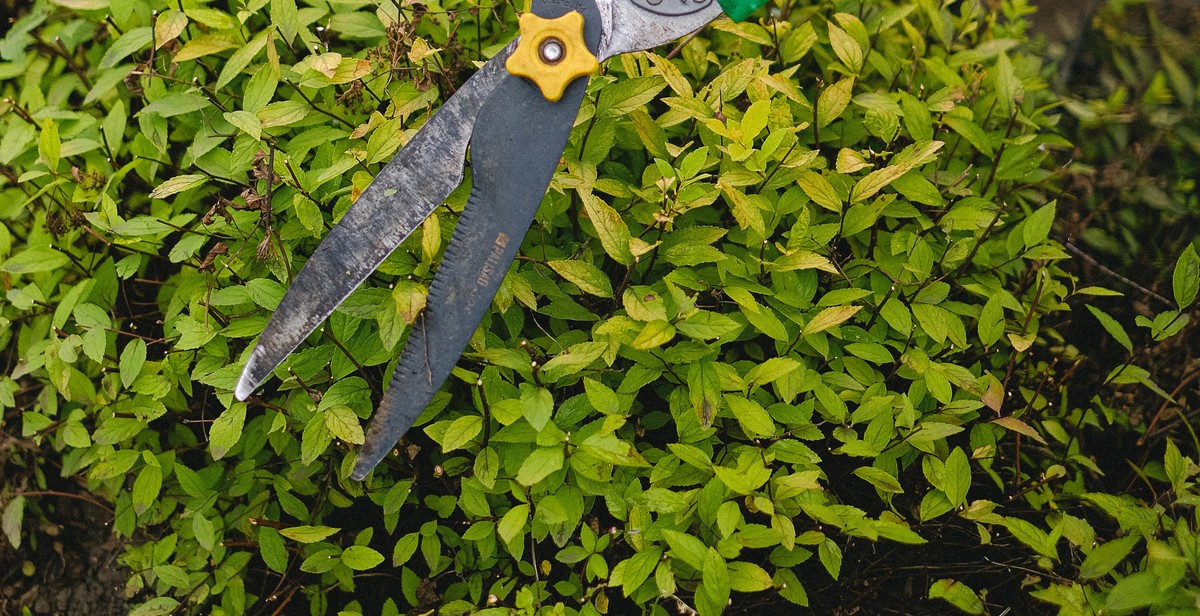How to Create an Earthquake-resistant Garden: Tips for Landscaping and Design
Living in an area prone to earthquakes can be daunting, but that doesn’t mean you have to sacrifice your love for gardening. In fact, with the right landscaping and design techniques, you can create an earthquake-resistant garden that is not only beautiful but also safe.
The Importance of Earthquake-resistant Garden Design
Earthquakes can cause significant damage to your garden, including uprooting trees, breaking hardscaping features, and damaging irrigation systems. That’s why it’s essential to incorporate earthquake-resistant design features into your landscaping plan.
Creating an Earthquake-resistant Garden
Creating an earthquake-resistant garden involves selecting the right plants, materials, and design features that can withstand the impact of seismic activity. Some of the tips to consider include:
- Choosing plants with deep roots and sturdy stems
- Using flexible materials for hardscaping features
- Creating a proper drainage system
- Building retaining walls and terraces
- Securing garden furniture and decorations
By incorporating these tips, you can create a beautiful and functional garden that can withstand earthquakes and other natural disasters.

Understanding Earthquakes and Their Effects on Gardens
Earthquakes are natural disasters that can cause significant damage to homes, buildings, and gardens. As an experienced gardener, I have witnessed firsthand the devastating effects that earthquakes can have on gardens. In this section, I will discuss what happens to gardens during earthquakes and how to identify potential garden hazards.
What Happens to Gardens During Earthquakes?
During an earthquake, the ground shakes and moves, which can cause soil to shift and plants to topple over. The severity of the damage depends on the intensity and duration of the earthquake, as well as the location of the garden. In general, gardens located on hillsides or near fault lines are more susceptible to damage.
Some of the common effects of earthquakes on gardens include:
- Soil liquefaction: This occurs when the soil loses its strength and stiffness, causing it to behave like a liquid. This can cause plants to sink or tilt.
- Landslides: If the garden is located on a hillside, an earthquake can trigger a landslide, which can bury plants and damage the garden.
- Ground cracks: An earthquake can cause the ground to crack, which can damage plants and disrupt irrigation systems.
- Broken pots and garden ornaments: During an earthquake, pots and garden ornaments can fall and break, causing damage to plants and the garden.
How to Identify Potential Garden Hazards
Identifying potential garden hazards before an earthquake can help you prepare and minimize damage. Here are some tips:
- Inspect your garden for potential hazards, such as loose rocks, unstable retaining walls, or overhanging trees.
- Secure garden ornaments and pots to prevent them from falling and causing damage during an earthquake.
- Choose plants that are less likely to topple over during an earthquake. Trees with deep roots, such as oaks and maples, are generally more stable than shallow-rooted plants like succulents.
- Consider using raised garden beds or containers to prevent soil liquefaction and soil displacement.
- Install irrigation systems that are flexible and can withstand ground movement.
By following these tips, you can create an earthquake-resistant garden that is better equipped to withstand the effects of earthquakes.

Designing an Earthquake-resistant Garden
Living in an earthquake-prone area can be challenging, but it doesn’t mean we have to compromise on our love for gardening. With proper planning and design, we can create an earthquake-resistant garden that can withstand the force of seismic activity. Here are some tips for designing an earthquake-resistant garden:
Choosing the Right Plants
Choosing the right plants is crucial for an earthquake-resistant garden. It’s important to select plants that have deep roots and can withstand strong winds and shaking. Trees like oak, maple, and redwood are known for their deep root systems and can provide stability to the soil. Shrubs like rosemary, lavender, and sage have shallow roots but are drought-tolerant and can help prevent soil erosion.
Creating a Stable Foundation
A stable foundation is essential for any garden, especially in earthquake-prone areas. Before starting any landscaping project, it’s important to evaluate the soil and make any necessary adjustments. Adding organic matter like compost and mulch can help improve soil stability and drainage. It’s also important to avoid building on steep slopes or areas prone to landslides.
Building Retaining Walls
Retaining walls can help prevent soil erosion and provide stability to the garden. When building retaining walls, it’s important to use high-quality materials like concrete or stone and to ensure that the wall is properly anchored to the ground. It’s also important to avoid building retaining walls that are too high, as they can become unstable during an earthquake.
Installing Proper Drainage Systems
Proper drainage is essential for an earthquake-resistant garden. It’s important to install a drainage system that can handle heavy rainfall and prevent soil erosion. French drains, which are trenches filled with gravel and a perforated pipe, can help divert water away from the garden and prevent soil erosion. It’s also important to avoid overwatering the garden, as this can weaken the soil and make it more susceptible to seismic activity.
Conclusion
By following these tips, you can create an earthquake-resistant garden that can withstand the force of seismic activity. Remember to choose the right plants, create a stable foundation, build retaining walls, and install proper drainage systems. With proper planning and design, you can enjoy a beautiful and safe garden even in earthquake-prone areas.

Maintaining an Earthquake-resistant Garden
Creating an earthquake-resistant garden is just the first step; maintaining it is equally important. Here are some tips to keep your garden safe and beautiful:
Regular Inspections
Regular inspections are essential to ensure that your garden is earthquake-resistant. Check for any signs of damage or weakness in your garden structures, such as retaining walls, garden beds, and garden furniture. Look for cracks, loose stones, and other signs of wear and tear that could indicate potential earthquake damage. If you notice any issues, address them immediately to prevent further damage.
Pruning and Trimming
Pruning and trimming your plants regularly can help prevent damage during an earthquake. Overgrown branches and limbs can break off and cause damage to your garden or home. Regular pruning and trimming can also promote healthy growth and improve the overall appearance of your garden.
Fertilizing and Watering
Proper fertilizing and watering can help keep your plants healthy and strong, making them more resistant to earthquake damage. Use a balanced fertilizer to provide essential nutrients to your plants, and water them regularly to keep the soil moist. Be careful not to overwater, as this can weaken the soil and make it more susceptible to earthquake damage.
| Task | Frequency |
|---|---|
| Inspect garden structures | Monthly |
| Prune and trim plants | Quarterly |
| Fertilize and water plants | Weekly |
By following these tips, you can maintain an earthquake-resistant garden that is both beautiful and safe. Remember to inspect your garden regularly, prune and trim your plants, and fertilize and water them properly to keep them healthy and strong.

Conclusion
Creating an earthquake-resistant garden is not only essential for the safety of your property but also for the well-being of your family and community. By following the tips and techniques discussed in this article, you can design a garden that is not only beautiful but also resilient to seismic activity.
Key Takeaways
- Choose plants that have deep roots and are flexible to withstand ground shaking.
- Use hardscaping features like retaining walls, terracing, and raised beds to stabilize the soil and prevent landslides.
- Install an irrigation system to prevent soil liquefaction and increase soil stability.
- Design a garden that allows for easy access and evacuation in case of an emergency.
Remember, Safety First!
When it comes to landscaping and gardening in areas prone to earthquakes, safety should always be your top priority. Consult with a professional landscaper or structural engineer to assess your property’s seismic risk and ensure that your garden design is safe and compliant with local regulations.
| Plant Name | Type | Root Depth | Flexibility |
|---|---|---|---|
| Bamboo | Grass | Varies | Flexible |
| Agave | Succulent | Varies | Flexible |
| Yucca | Succulent | Varies | Flexible |
| Japanese Maple | Tree | Deep | Flexible |
| Olive Tree | Tree | Deep | Flexible |
By incorporating earthquake-resistant features and selecting the right plants, you can create a beautiful and safe garden that can withstand seismic activity. Remember, safety first!
